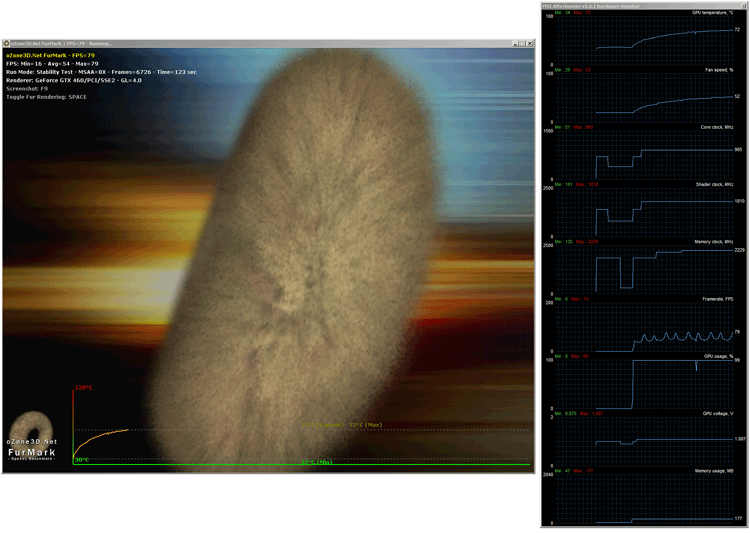Overclocking the KFA2 / Galaxy GTX 460 1024MB models
Overclocking the KFA2 GeForce GTX 460 1024MB models
Small note - naming has changed in the charts you see the old name. GC is in fact D5 EX OC (700 MHz) and SOC is in fact the D5 LTD OC (810 MHz).
As most of you know, with most videocards you can apply a simple series of tricks to boost the overall performance a little. You can do this at two levels, namely tweaking by enabling registry or BIOS hacks, or very simply tamper with Image Quality. And then there is overclocking, which will give you the best possible results by far.
What do we need?One of the best tool for overclocking NVIDIA and ATI videocards is our own Rivatuner that you can download here. If you own an ATI or NVIDIA graphics card then the manufacturer actually has very nice built in options for you that can be found in the display driver properties. Based on Rivatuner you can alternatively use MSI AfterBurner which will work with 90% of the graphics cards out there. We can recommend it very much, download here.
Where should we go?
Overclocking: By increasing the frequency of the videocard's memory and GPU, we can make the videocard increase its calculation clock cycles per second. It sounds hard, but it really can be done in less than a few minutes. I always tend to recommend to novice users and beginners, not to increase the frequency any higher than 5% on the core and memory clock. Example: If your card runs at 600 MHz (which is pretty common these days) then I suggest that you don't increase the frequency any higher than 30 to 50 MHz.
More advanced users push the frequency often way higher. Usually when your 3D graphics start to show artifacts such as white dots ("snow"), you should back down 10-15 MHz and leave it at that. Usually when you are overclocking too hard, it'll start to show artifacts, empty polygons or it will even freeze. Carefully find that limit and then back down at least 20 MHz from the moment you notice an artifact. Look carefully and observe well. I really wouldn't know why you need to overclock today's tested card anyway, but we'll still show it.
All in all... do it at your own risk.
| Original | This sample | Overclocked + GPU voltage |
| Core Clock: 675MHz | Core Clock: 700MHz | Core Clock: 880MHz |
| Shader Clock: 1350Hz | Shader Clock:1400MHz | Shader Clock: 1760Hz |
| Memory Clock: 3600MHz | Memory Clock: 3700MHz | Memory Clock: 4236MHz |
First up, the regular D5 EX OC model. Now we left fan RPM control at default in all circumstances and we applied extra GPU voltage which was set at 1.08 volts.
Check it out, it is a nice overclock alright, and that shows in performance increases. With added GPU voltage our core temperature remains at roughly 70 degrees C under load which is good.
GC model with COD: Modern Warfare 2, maxed out image quality settings as before with 4xAA 16xAF
The Super Overclock version then.
| Original | This sample | Overclocked + GPU voltage |
| Core Clock: 675MHz | Core Clock: 810MHz | Core Clock: 902MHz |
| Shader Clock: 1350Hz | Shader Clock:1620MHz | Shader Clock: 1804MHz |
| Memory Clock: 3600MHz | Memory Clock: 4000MHz | Memory Clock: 4398MHz |
There is not much difference in-between the D5 EX OC and D5 LTD OC model when it comes to extreme overclocking. Both cards MIGHT originate from the same bin. We got the SOC version a little bit higher though, again an increased GPU voltage was applied at 1.08v.
We got the card stable at 900 MHz, but we are certainly close to the maximum alright. Anything higher and we would run into issues. Still, look at the performance increase thanks to the overclock. And please do have a peek at reference performance.
The GTX 460 cards scale really well in overclocking.
SOC model with COD: Modern Warfare 2, maxed out image quality settings as before with 4xAA 16xAF

